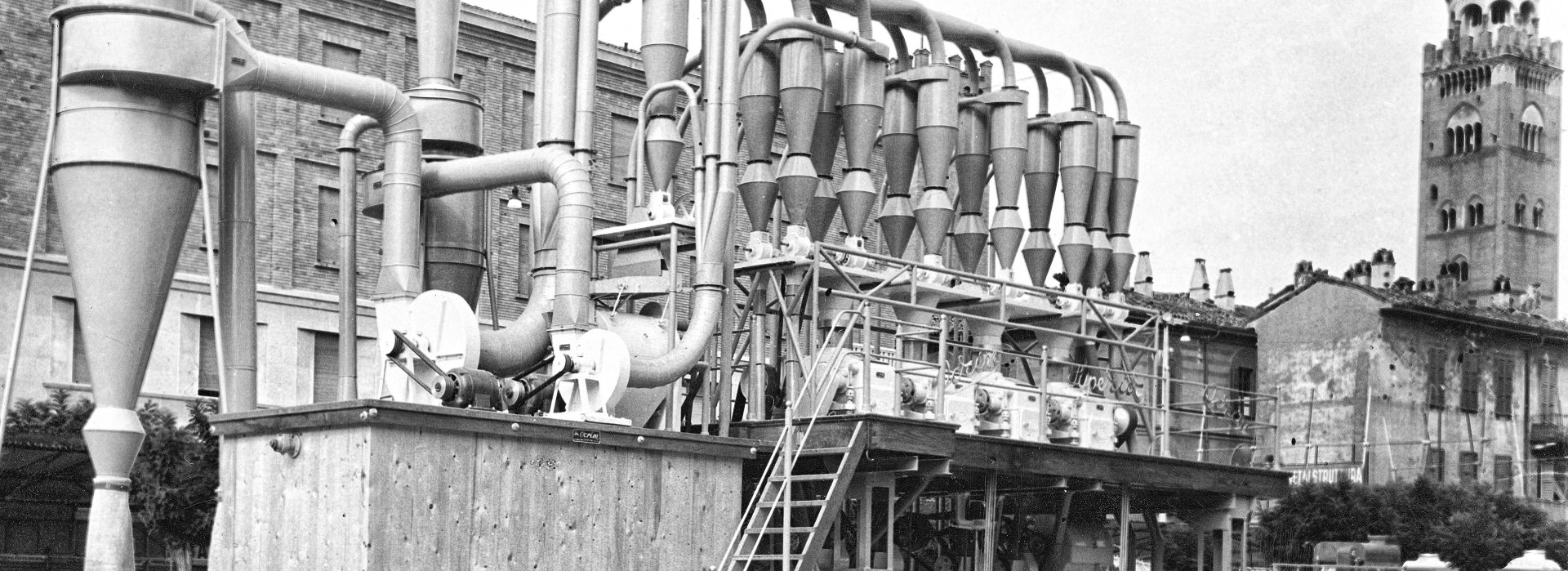
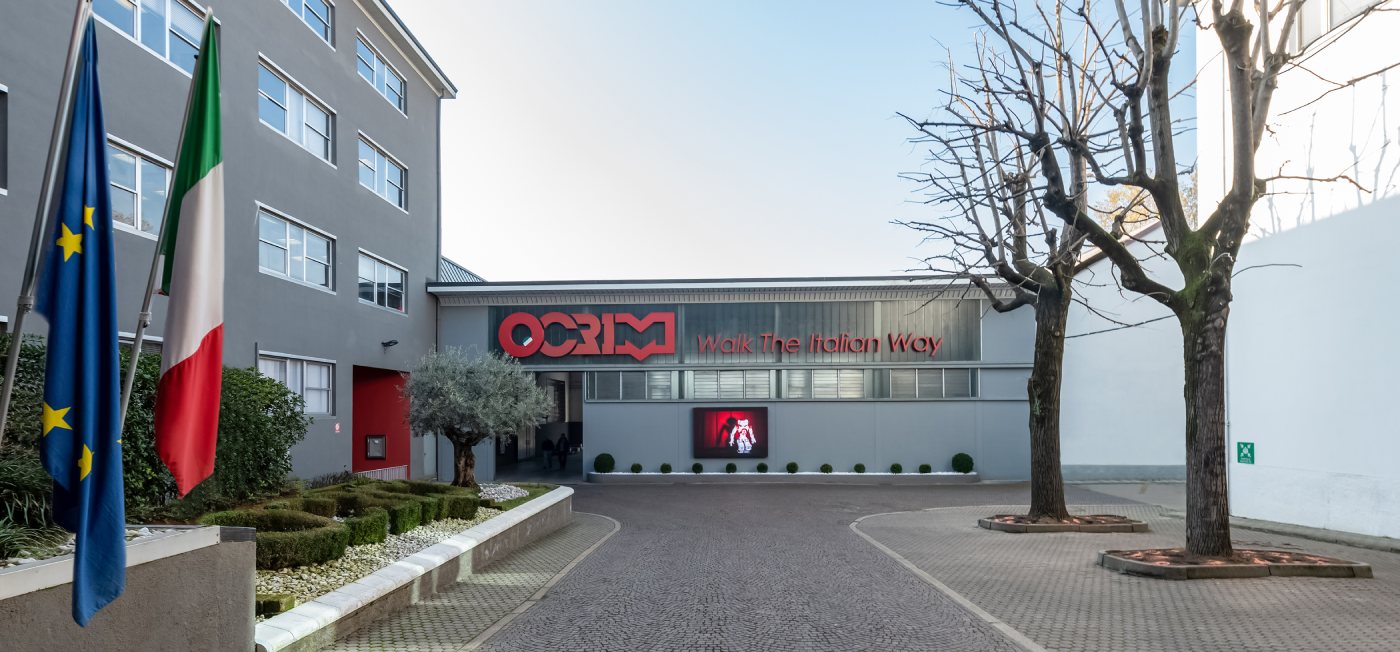
Ocrim was founded in 1945 by Cavaliere del Lavoro Guido Grassi, with the invaluable contribution of his brother Ettore and his cousin Luigi Grassi, a professional miller.
Originally a workshop with no more than 25 employees, within just a few years it became one of the leading and most well-Known companies in the milling sector, expanding all over the world, not only thanks to its essential and significant technical expertise, but also to its thorough knowledge of the cultures and needs of the various countries and markets.
Today, Ocrim has two locations in the city of Cremona (Lombardy, Italy): the historic headquarters in Via Massarotti, which houses the technical, sales, administrative and management departments and some of its production departments, and the state-of-the-art headquarters at the canal port, which houses the logistics and production departments.
The company’s departments are aligned with the concept of an industrial supply chain, with every process in the factory insourced, ensuring traceable, checked and certified Italian-made products. Its know-how, which is closely linked to the Italian Made concept, has allowed the company to set the benchmark in the milling sector and in the global agri-food industry.
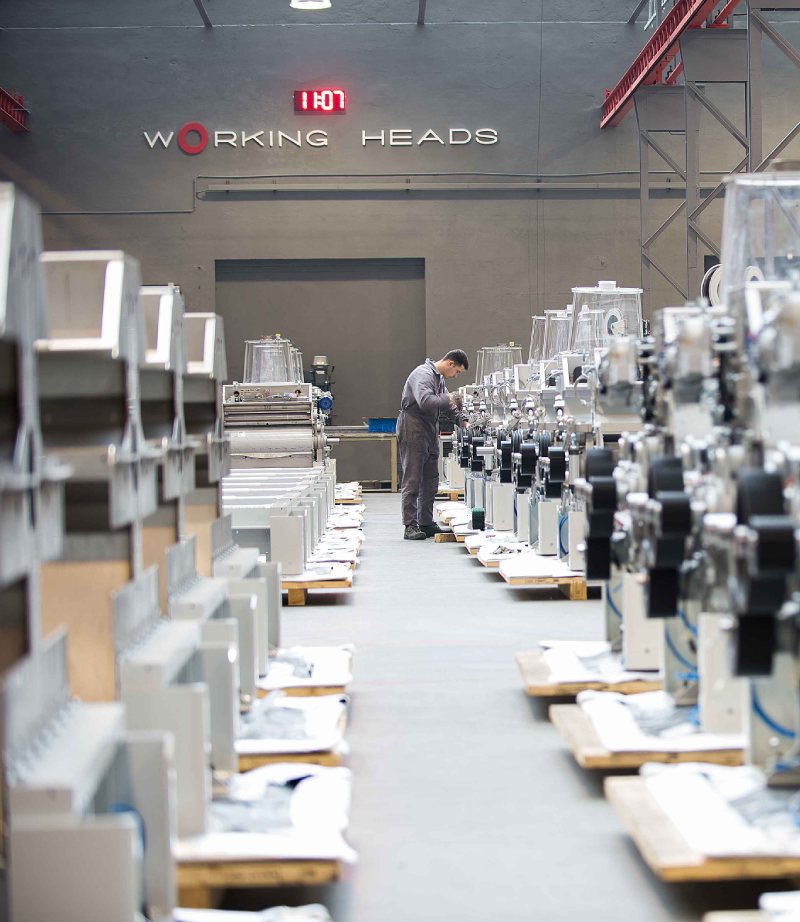
Designed in the 1950s and based on a groundbreaking concept, for at least 20 years the SUPERIOR mill has remained the undisputed icon of state-of-the-art engineering, constructively contributing to Ocrim’s industrial growth and making the company’s name known all over the world, starting from Central and South America.
A mill for milling wheat only, which was compact, smart and had various functionalities that varied according to customer requirements. It had plansifters on the ground floor and roller mills on the upper floor.
The Superior was assembled and tested in the workshop. It was then partially disassembled before being shipped and, upon arrival at its destination, it was reassembled and was soon ready for use. In this way, the challenges posed by transport and on-site assembly were minimized.
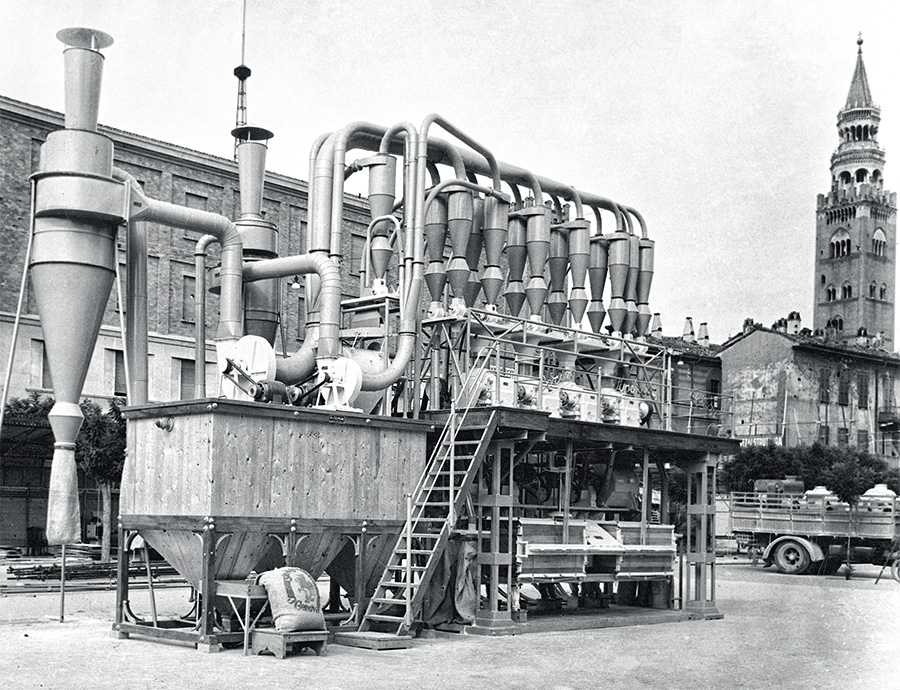
The image of the SUPERIOR mill, which in 1948 was put on display in Piazza Marconi at the Cremona Trade Fair, leaving everyone speechless, is still emblematic.
The huge success of the compact mill – as described above – inevitably led to its evolution later on. This evolution is known as the MCA – compact milling unit and it was an overnight success. In the late 1980s, the demands of the milling market, from an agro-industrial perspective, increased significantly and became more defined.
At the time, these needs were mainly voiced by developing countries, such as North Africa and Eastern Europe. In those days, the MCA was an essential tool for small and novice entrepreneurs, aimed at helping them become successful and experienced millers.
The MCA was a mill consisting of four modules, each of which was similar to a 40-foot container, with pre-assembled equipment.
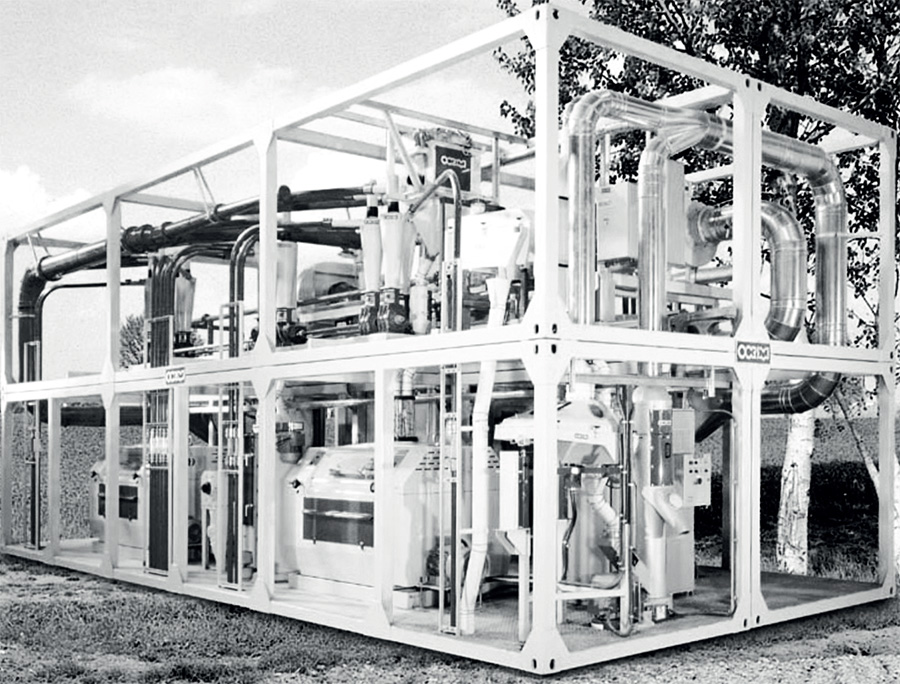
In addition to the cleaning and milling line, upstream there were bins for conditioning and storing the raw materials, while downstream there were bins for storing the flour and bagging it. It was basically a mill, which also offered the advantage of shorter on-site assembly times by simply connecting the four modules, which were then connected to the grain and finished product storage bins.
‘There is real progress only when the advantages of a new technology become available to everyone’, Henry Ford in the early 1900s.
We also firmly believe that such a masterpiece – i.e. the MCA – could not remain confined to the past, specifically the 1980s and 1990s.
This is why, today, we offer this same masterpiece through an innovative and revolutionary business concept in the milling sector.
THE LOGO
In the early 1950s, Ocrim was already setting the benchmark in the milling industry. A partner who is always available, reliable and willing to establish lasting relationships based on esteem, trust and familiarity. This familiarity is captured in an expressive and elegant way by the Ocrim logo that was created back then.
A logo in black italics, a symbol of dynamism and vigor. In those years, the huge overnight success of the SUPERIOR mill prompted Ocrim to immediately dedicate a logo to it. An icon that would represent it all over the world. A single word, SUPERIOR, written in italics, with no reference to Ocrim, which, however, could be associated with the company because of the style and colour of the logo.
The MCA milling unit was set up in the 1980s. Conceptually, its structure is similar to that of the SUPERIOR, however, from an engineering perspective, it is more complex and has proven to be a true innovation for the whole sector.

The logo that was designed and chosen for the MCA has a completely different style to that of the SUPERIOR: it is compact, much thicker and in capital letters. In terms of design and style, it follows the evolution of the Ocrim logo during those years, encapsulating the engineering development concept, which is inextricably linked to the company’s stylistic and iconographic concept, through which it is told.
It was in those years that Ocrim began to restyle its image. The company logo, which was black just like the previous one, is now red, the symbolic colour of the city of Cremona. Consequently, the company also chose to use the colour red for the MCA logo.

Numerous artists, philosophers and entrepreneurs of our time have argued – and still argue – that ‘appropriation is the expressive style of postmodernism’, The postmodern era has the ability and power to “reinstate” the past, reconstructing it with modern means, skills and technology. This is not about going back to the past: as a matter of fact, the past is making a comeback in an unthinkable and sensational manner.
The success of the Superior in the 1950s-60s could not remain just a memory or an example. Ocrim came up with an idea that was innovative for its time, and is now pioneering again with a groundbreaking idea that draws on its glorious past. So in this post-modern era, the Superior is “reborn”. It is now back in the form of an enclosed S, which is entirely incorporated into the quintessential and symmetrically perfect geometric shape. Superior is back to being “cubed”.




